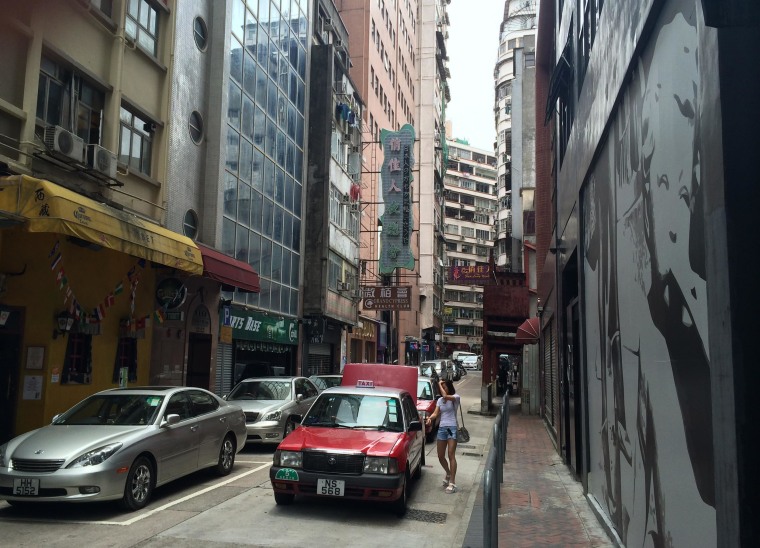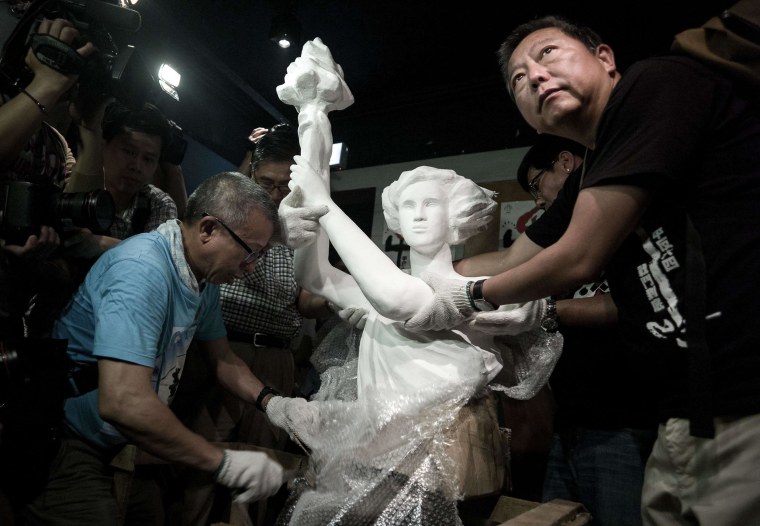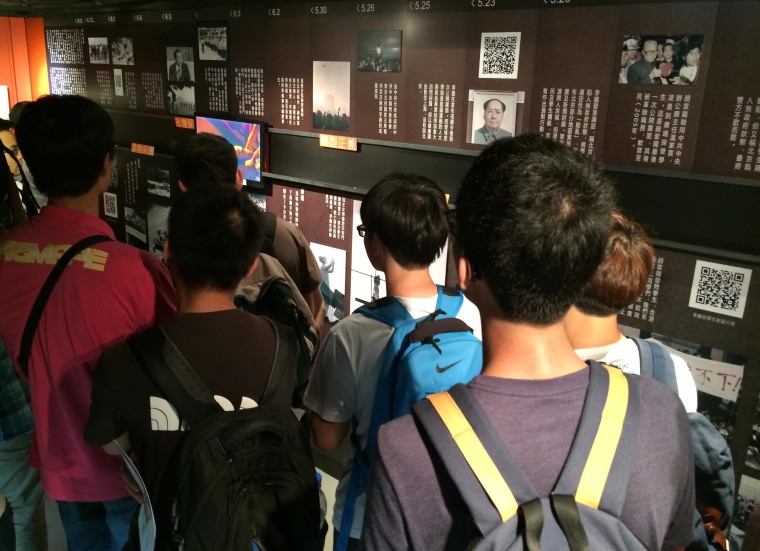HONG KONG — It’s not easy to find what might be the most important museum in China.
Take a left up a narrow Kowloon side street, marked by a wig shop on the corner, then on to a drab commercial building next to a pub called “The Tibet.”
“It’s on the fifth floor,” barked a security guard in the building’s small, dark lobby.
Life for him has become much busier since the April opening in this crowded Hong Kong suburb of the "June 4 Museum," the only permanent exhibition on Chinese soil that commemorates the 1989 democracy movement and the bloody crackdown that killed hundreds, possibly thousands.
“We have a responsibility to preserve the historical truth,” said Lee Cheuk-yan, Chairman of the Hong Kong Alliance in Support of Patriotic Democratic Movements of China, which took nine years to raise the funds for the museum.

“We have to tell the truth to the younger generation, to the mainlanders who have no knowledge at all,” he said recently.
The small museum would probably sit comfortably in a closet of Beijing’s official “National Museum of China” in Tiananmen Square. Inside the enormous building, one can view Deng Xiaoping’s cowboy hat, presented to him on a visit to the U.S., but learn nothing about one of the darkest periods of modern Chinese history, when the then paramount leader unleashed the army on his own people.
There is a photograph of a May 1989 Deng meeting with the then-Soviet leader Mikhail Gorbachev inside the Great Hall of the People, but nothing of the protests outside on the square while that meeting went on.
“In China they try to eradicate the whole memory. They try to erase everything about June the 4th.”
China boasts that the museum is the largest anywhere under one roof. It was renovated over four years at a cost of $400 million, designed as a showcase of history and culture, and just re-opened to the public in 2011.
Modern history – “The Road to Rejuvenation,” as that section is called - is built around a series of major events, including the 2008 Beijing Summer Olympics and a fast train to Tibet.
It is about the Communist Party’s triumphs. There is no room here for an evaluation of what many regard as one of the Party’s greatest crimes.
“In China they try to eradicate the whole memory. They try to erase everything about June the 4th,” said Lee at the museum in Hong Kong.
This year, as the 25th anniversary has approached, the clampdown in China has been severe, even by its own standards, with scholars and activists arrested, and efforts to block from the Internet even coded references to June 4.
Lee said that more than half the visitors to the June 4 Museum are mainlanders, visiting Hong Kong. He said they included recently a man whose job it was to censor June 4 references from the Internet, which is how he learned about the museum.
The 800 square foot exhibition – in words, old newspapers, photographs and video, some of it interactive – takes the form of a time-line, which winds maze-like around the room. There is a model of the goddess of democracy, the statue, inspired by the Statue of Liberty, which became a symbol of the democracy movement.

Lee himself was part of a group that collected and ferried cash to the protesting students. He witnessed the brutal crackdown and was himself briefly detained.
“I still remember vividly,” he said. “It was the darkest time of my life, when we fell down from the pinnacle of hope to despair.”
On the eve of the 25th anniversary, the museum was packed, mostly mainlanders, seemingly transfixed by what they were seeing.
“We have a responsibility to know the facts,” said one young man – a student, who asked that neither he nor his university be identified.
“We are scared,” he said.
Another, older man, said: “It’s important we know this,” before nervously moving on.
In a small theater to one side of the room every seat was taken for a screening of testimonials from mothers of the Tiananmen dead, a brave group, barely known within China.

Hong Kong’s autonomy means that the government cannot simply shut the museum down – but that doesn’t mean local authorities haven’t tried.
The building’s owners have tried to shutter the museum by claiming it violates rules barring space being used for memorial or exhibition purposes, even though several other companies in the building have showrooms.
“For sure, it’s politically motivated,” Lee said.
As he spoke, mainland visitors where scanning the exhibits with their smart phones, to take back, Lee hoped, and show to friends and family, and insuring that this tiny museum goes some way to fill the gaping hole left by Beijing’s gigantic National Museum of China.